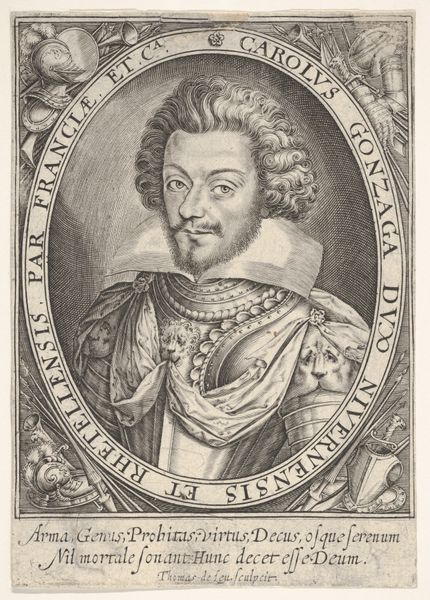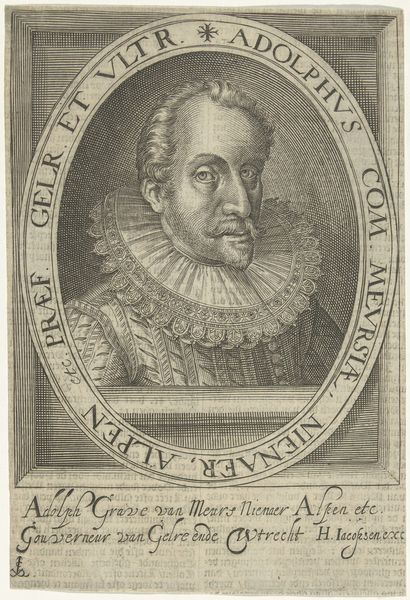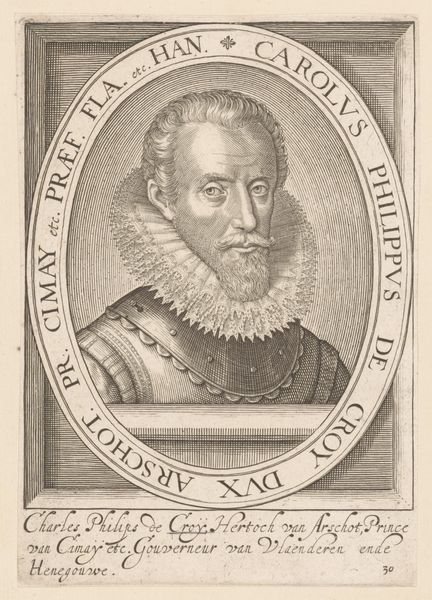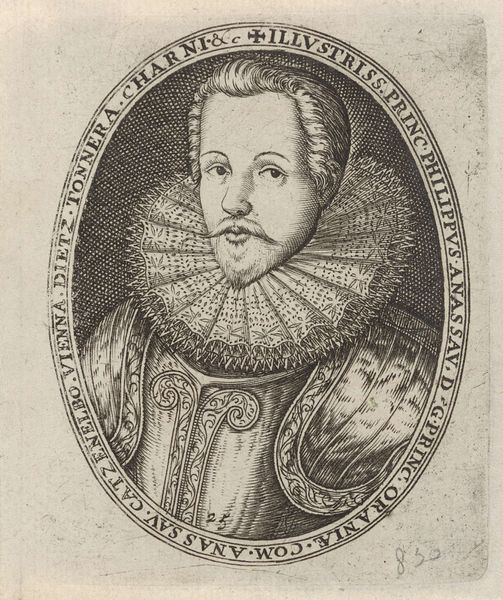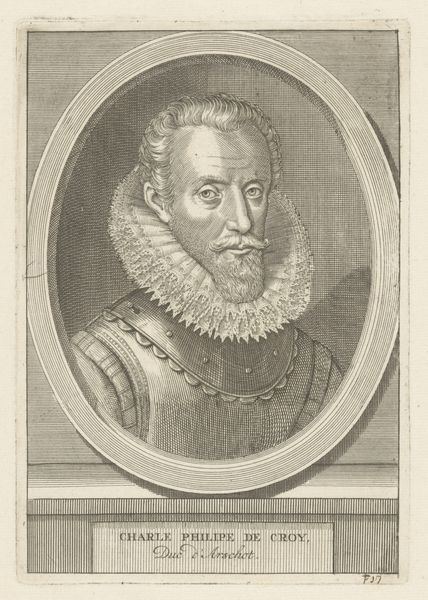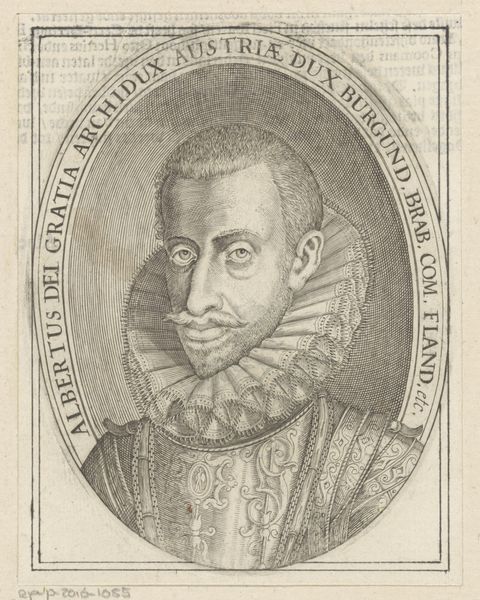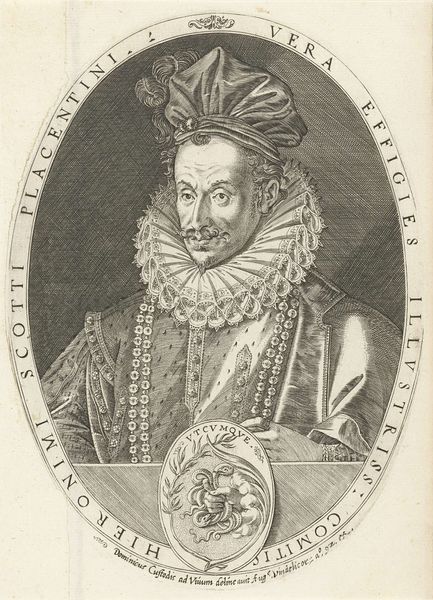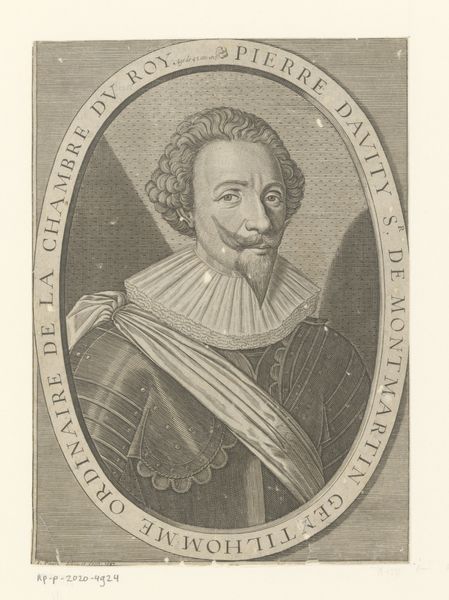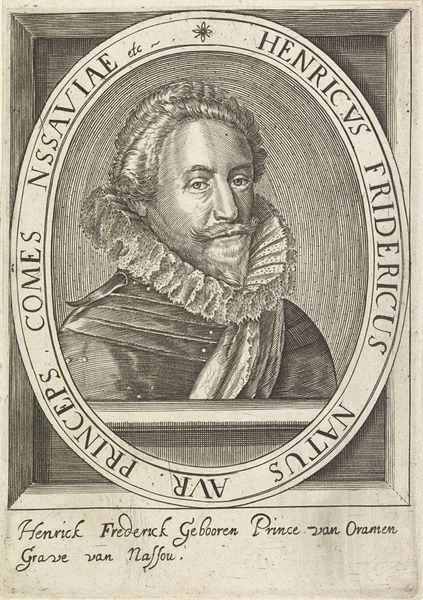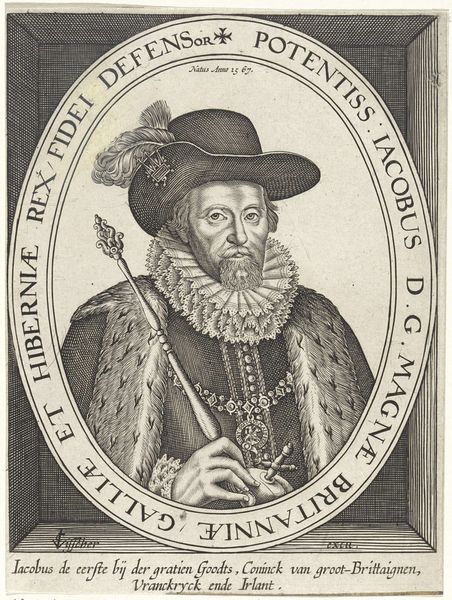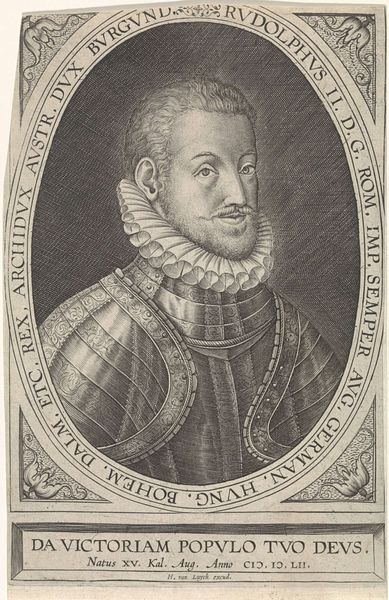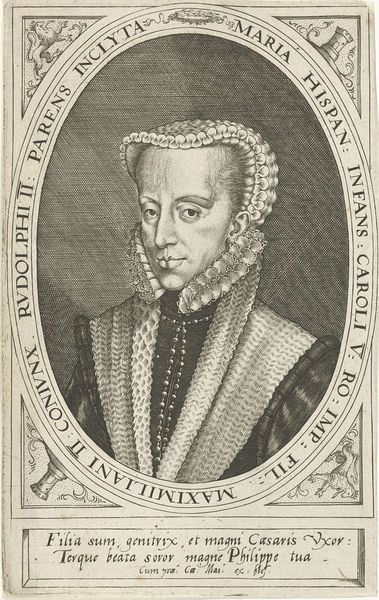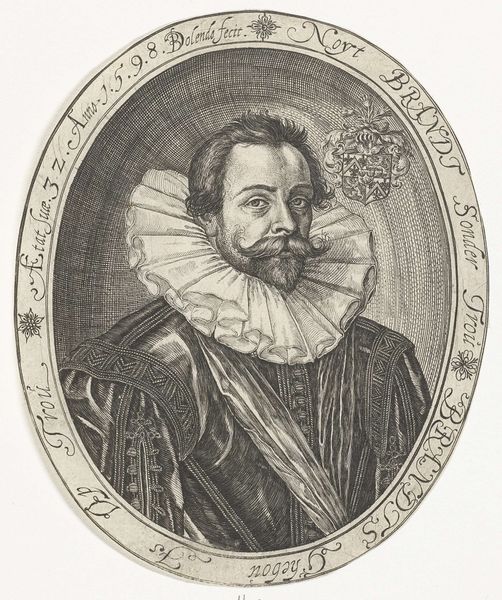
print, engraving
#
portrait
#
baroque
# print
#
11_renaissance
#
engraving
Dimensions: sheet: 14.8 x 10 cm (5 13/16 x 3 15/16 in.), cut within platemark
Copyright: National Gallery of Art: CC0 1.0
Curator: Let’s discuss this engraved portrait, titled “Anne, duc de Joyeuse.” The piece is attributed to Thomas de Leu. What strikes you most about it? Editor: Initially, the visual structure really stands out. The stark contrasts between the dark lines of the engraving and the white paper create a dramatic chiaroscuro effect, particularly in the ruff. How was this kind of precise detail even achievable? Curator: The process involved meticulously incising lines into a metal plate, which would have been painstaking manual labour. It would be intriguing to know about De Leu's workshop setup and the economic pressures that underpinned this kind of reproductive printmaking in Renaissance France. Prints like these weren’t merely artistic expressions. Editor: Absolutely. And this labour manifests so elegantly; notice the precision of the lines defining the Duke’s face and the subtle shading used to create volume. The composition, confined within the oval frame and emphasized by the text surrounding it, contributes to a powerful sense of contained nobility. Curator: And contained wealth! Look closely at the armor, the meticulously crafted clothing; such adornments not only denote rank but also serve as commodities within a culture of courtly display, establishing social hierarchies. The very act of producing such portraits provided a living for artists and artisans who depended on noble patronage. Editor: But we shouldn't reduce the work to merely its material conditions. Note the expression. It's caught somewhere between defiance and resignation—reflecting maybe a complicated internal life? The tilt of his head and the subtle details in his gaze invite contemplation, creating intimacy through formal choices, and, again, sheer technical virtuosity. Curator: While acknowledging those choices, it is imperative to remember the socioeconomic context: portrait engravings like these bolstered the sitter’s legacy, helping disseminate his image and political power via the printing press—a powerful early tool of propaganda! Editor: An important consideration. I suppose focusing on form alone is never sufficient. The artist always uses the elements available to them, within their place in time. Curator: Precisely.
Comments
No comments
Be the first to comment and join the conversation on the ultimate creative platform.
